
October 2019
The Havana
Trotsky Conference
Notes of a Participant
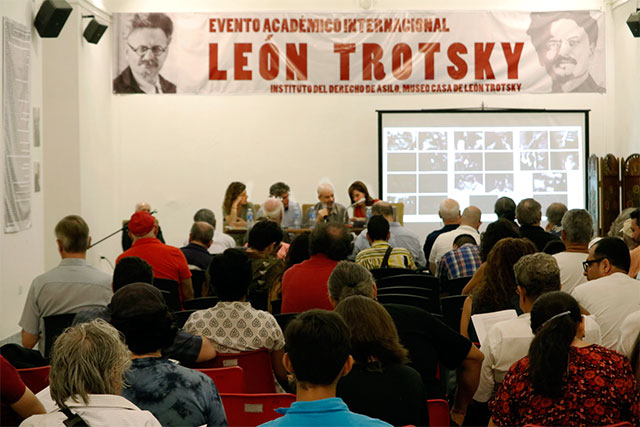
The conference was attended by supporters of a number of tendencies, and saw sharp polemical debates over fundamental issues for Trotskyists. Supporters of the League for the Fourth International insisted on the vital importance of Trotsky’s defense of the first workers state, the Soviet Union.
By Alberto Fonseca
On May 6-8, an unprecedented and important event was held in Havana, Cuba: the first “International Academic Conference on Leon Trotsky.” The conference was sponsored by Cuba’s Institute of Philosophy and Juan Marinello Institute for Cultural Research, and was held at the Casa México Benito Juárez in Habana Vieja, Havana’s historic “old town.” Those attending included Cuban researchers and students, together with scholars and activists from Argentina, Brazil, Canada, Germany, Italy, Mexico, Peru, Spain, Turkey, the United States and other countries.
As a speaker at the conference, where I gave a talk on “Trotsky in Mexico: Anti-Imperialism and Struggle for the Political Independence of the Working Class,” I was one of the supporters of the League for the Fourth International (LFI) who had the very real honor of participating in this historic event. Panels and presentations addressed many topics – on biographical, cultural, literary and historical themes, among others – from a broad range of viewpoints. This is far more than a brief report can seek to cover. Instead, the purpose of these notes is to give an overview, some background and impressions; and to provide context for the presentations and comments from the floor made by LFI supporters, which are available on the Internet at www.internationalist.org .
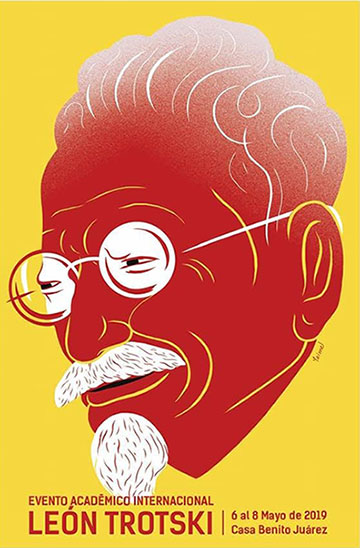 Poster of the conference.
Poster of the conference.Above all, our engagement with the history of Trotsky and Trotskyism is inseparable from today’s struggle for international socialist revolution. We consider the lessons of history to be essential for the fight for humanity’s future. This means political struggle in the here and now for the genuine communist program upheld by Trotsky, the co-leader together with Lenin of the Bolshevik Revolution in tsarist Russia, the organizer of the October 1917 insurrection, founder of the Red Army and of the Fourth International.
Thus at the conference, we considered political debate and polemical discussion to be essential, though this important aspect has been downplayed or ignored in most accounts of the event. Key issues included the “Russian Question” (the nature of the countries where capitalism was overthrown, and their defense against imperialism and counterrevolution), the fight against class collaboration, and Trotsky’s program of permanent revolution vs. Stalin’s anti-Marxist dogma of “socialism in one country.”
The urgency of proletarian-revolutionary internationalism – not as a ritual phrase but as a guide for powerful action by workers internationally against imperialism – was highlighted by the fact that the conference took place just as the White House pushed its attempted coup in Venezuela, and tightened the vicious blockade against Cuba. These aspects too will be discussed in more detail below.
Celia Hart, the Trotsky Museum and the Havana Conference
The conference was organized by Frank García Hernández, a young researcher at the Marinello Institute, as part of a team that included his colleagues Lisbeth Moya González, Yunier Mena, and the director and staff of the Casa Juárez. With contagious enthusiasm, they overcame many obstacles (some anticipated, some unexpected) to ensure that the event would be carried out successfully.
In his inaugural remarks, comrade García paid moving tribute to the memory of Celia Hart (1962-2008), the Cuban physicist who was the daughter of two renowned leaders of the Cuban Revolution: Armando Hart and Haydée Santamaría. In the early 2000s, she declared her sympathy with Trotsky’s ideas, and she sought to popularize them in Cuba until her tragic death in a traffic accident eleven years ago. García also saluted veterans of the Cuban Trotskyist movement, including León Ferrera, the son of Idalberto Ferrera, whose participation went back to the early 1930s. Inaugural remarks also referred to the important collaboration with the conference from the Trotsky Museum in Mexico City.
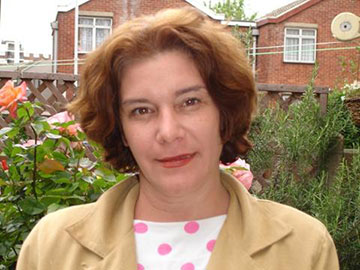 Celia Hart Santamaría
Celia Hart Santamaría These are elements of vital context for the conference, whose intersection was striking for me as a Mexican Trotskyist. The event was my first visit to Cuba since July 2005, when I visited Celia Hart in Havana. I had met her at the Trotsky Museum in Mexico City in the spring of that year. She invited me to attend the event that was going to be held that summer in Cuba to commemorate the attack on the Moncada Barracks, which was carried out on 26 July 1953 and set the stage for the overthrow of the Batista dictatorship by Fidel Castro’s 26 of July Movement.
I took her up on this, and attended the anniversary commemoration she organized in Havana. It was held in the museum dedicated to her uncle Abel Santamaría, who was captured in the attack on Moncada on that day 52 years before, then brutally tortured and murdered. (Celia’s mother Haydée also played a key role in the attack.) In her speech that evening, Celia emphasized the importance of internationalism and her belief that Trotsky’s ideas were crucial for the revolutionary defense of Cuba.
While we differed on important questions (not least the guerrilla warfare strategy that led to many tragic defeats in Latin America), I was proud to join Celia and other Cuban comrades as we sang the “Internationale” that summer night. And it was thanks to her that I met Idalberto Ferrera. Listening to him speaking lucidly in his apartment near Havana’s Capitol building during that 2005 visit, it struck me that this was the first (and perhaps the last) time I had the opportunity to talk with a Trotskyist militant who had joined the Fourth International while Trotsky was still alive.1 His son León was also present then, proudly showing me a photo of himself as a member of the revolutionary militia in the early 1960s. León also recounted a number of anecdotes about the period when he worked under Che Guevara in the Ministry of Industry.
Celia Hart’s sudden and shocking death seemed, from afar, to threaten to extinguish the growth of interest in Trotsky’s ideas on the besieged island. Yet late last year, we heard the news that plans were underway to hold a gathering in Havana devoted to the study of Trotsky’s legacy, which filled us with enthusiasm. At almost the same time I heard from a Mexican colleague living in Havana that the publication of Cuban author Leonardo Padura’s novel about Trotsky, The Man Who Loved Dogs, was awakening considerable interest among the Cuban public regarding the Russian revolutionary leader.
The Havana conference received important support from the Trotsky Museum in Mexico City. Led by Trotsky’s grandson Esteban Volkov, the Museum provided key assistance, including the wonderful display of photos and other materials that it sent, which were installed in the conference hall. Esteban sent a warm greeting to the conference, and the Museum’s acting director, Gabriela Pérez Noriega, gave a presentation at the conference, on the activities carried out there. Due to the efforts of Esteban and the entire staff, Trotsky’s house in Coyoacán – now the Casa Museo León Trotsky – has largely been returned to the appearance it had when the exiled Bolshevik leader lived there and waged his last political battles.
Today the Museum is in very good condition, but this has meant overcoming many obstacles over the years. Our tendency’s involvement with preserving the Trotsky house as a living part of the revolutionary heritage goes back decades, to the mid-1980s when (at a time when it had very little financial support) we aided the carrying out of vital repairs. After it became an official museum in 1990, comrades gave tours, helped classify and identify historic photos, documents and publications, and in 1995 our comrade Socorro Valero planned and oversaw the restoration of the monument, designed by Mexican artist Juan O’Gorman, that contains the ashes of Trotsky and his companion Natalia Sedova. Thus the connection between the Museum and the Havana Trotsky conference was a highly important point of reference for us, as for others.
Trotsky’s Revolutionary Internationalism Essential Today
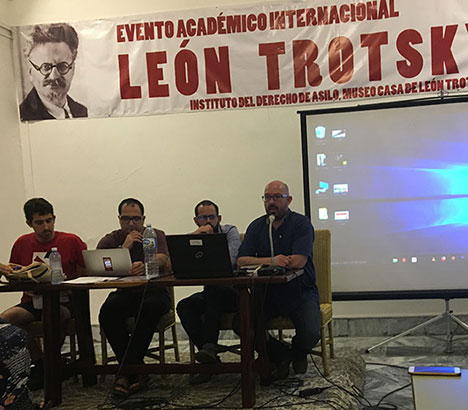 Alberto Fonseca speaking on “Trotsky in
Mexico.” (Internationalist
photo)
Alberto Fonseca speaking on “Trotsky in
Mexico.” (Internationalist
photo)We arrived in Havana not long after U.S. president Donald Trump activated “Title III” of the notorious Helms-Burton Act. This heightened aggression against Cuba, together with Washington’s attempted coup in Venezuela, were a stark backdrop to the event. Passed in 1996 during the presidency of Democrat Bill Clinton, the Helms-Burton Act tightened the U.S. embargo aimed at starving Cuba’s people into submission and promoting capitalist counterrevoluton – all in the name of imperialist “democracy,” of course. The law’s Title III, which had previously been kept in reserve (“suspension”), states that non-U.S. companies trading with Cuba can be tried in U.S. courts if they use property “confiscated” (nationalized) after the Cuban Revolution. The use of extraterritorial trials is aimed at forcing companies (mainly from Canada and Europe) to stop trading with or carrying out activities in Cuba.
In early May, court suits of just this kind began, kicked off by counterrevolutionary exiles (“gusanos”) declaring themselves rightful “owners” of the docks of Havana and Santiago, Cuba. Targets include cruise ships and vessels bringing oil from Venezuela. The brutal exacerbation of scarcity of many consumer products imposed by this vicious measure recalls, for many Cubans, the enormous difficulties they faced during the “special period” brought on by the counterrevolutionary destruction of the Soviet Union, which left Cuba without supplies key to its economy. Today, the ramping up of the attempt to strangle the Cuban Revolution was met with widespread indignation in Cuba, where the demand “Down with the Helms-Burton Act!” figured prominently in the May Day rally held a week before the conference, in which hundreds of thousands marched with evident enthusiasm.
As the Havana conference began, this situation highlighted anew the urgency of defending the Cuban Revolution, a vital conquest for the workers and oppressed of the entire world. It underlined the vital importance of discussing the theoretical and programmatic heritage of Leon Trotsky. The event’s importance was far greater than any purely academic gathering could have. As Lenin stressed, revolutionary Marxism is a “guide to action” by the international proletariat.
Thus, the struggle between Trotsky’s program of “permanent revolution” and Stalin’s dogma of “socialism in one country” continues to be crucial for revolutionaries around the world. It was of decisive importance that Trotsky fought relentlessly to uphold the internationalist program of the October Revolution, against Stalin’s anti-Marxist, nationalist lie that socialism could be built in the Soviet Union in isolation from the international socialist revolution. Though the USSR made up one sixth of the planet, the constant economic and military pressure of world imperialism led to the bureaucratic degeneration of the Soviet workers state, and the counterrevolutionary destruction of the USSR and the East European deformed workers states in 1989-92.
For Trotsky, defense of the enormous conquests for humanity brought by the overthrow of capitalist rule in the old tsarist empire and the expropriation of the capitalists and landlords demanded the international extension of the socialist revolution, leading to the overthrow of world imperialism. This, together with a proletarian political revolution restoring the proletarian democracy of the soviets (workers councils), was crucial to defend the gains of October and open the way to a classless, socialist society.
Trotsky’s last political battle was to uphold the Fourth International’s historic position in defense of the Soviet workers state. In that struggle, his close collaborator James P. Cannon – founder of Trotskyism in the Western hemisphere – led the fight in the U.S. section against the “petty-bourgeois opposition” of Max Shachtman and James Burnham, which renounced this just as World World II began.
At the Havana conference, LFI supporters spoke out in defense of Trotsky’s position. Thus we found ourselves answering claims that Trotsky’s Left Opposition should have made a political bloc with Nikolai Bukharin’s Right Opposition; and opposing the positions of Shachtman and of the late Tony Cliff, which were echoed by a small number of participants. (One presentation was devoted to upholding Cliff’s crude “theoretical” justifications for opposing defense of the USSR on the grounds that it was supposedly “state capitalist.”) It was striking that the LFI was the only tendency whose supporters at the conference forthrightly took up this crucial challenge, though our remarks (see http://www.internationalist.org/havana-trotsky-conference-presentations-comments-1910.html) were warmly applauded by much of the audience, including many of the Trotskyist “old-timers” present there.
Railing against “Soviet imperialism,” “socialist” Cold Warriors such as Shachtman and Cliff represent the antithesis of Trotskyism, standing on the opposite side of the barricades all down the line. Upholding the Trotskyist position on the “Russian Question” is essential today in the fight to defeat U.S. imperialism’s onslaught against Cuba and its drive for capitalist counterrevolution from China, North Korea and Vietnam to the embattled Caribbean island.
Broad Range of Topics
As Trotsky’s and Cannon’s struggle against Shachtman is crucial to understanding the history of Trotskyism – and what it is and isn’t today – the presentation by Cannon’s biographer Bryan Palmer was one of the highlights of the Havana Conference. The Canadian researcher gave a fascinating talk, “On Cannon, Shachtman and Early U.S. Trotskyism,” succinctly bringing to light a series of crucial episodes in the period leading up to the crucial showdown over the Russian Question in 1939-40. (Palmer’s notes for the talk are available on line here.)
Another widely-known speaker at the conference was U.S. leftist historian Paul Le Blanc, who gave a well-researched talk titled “The Darker the Night, the Brighter the Star: Leon Trotsky’s Struggle Against Stalinism.” Le Blanc was formerly associated with the “United Secretariat” of the late Ernest Mandel, which claimed to be the Fourth International while systematically adapting to reformist, Stalinist and nationalist leaderships, eventually embracing an essentially social-democratic standpoint.3 Describing the devastation wrought by Stalin’s murderous campaign against the Left Opposition, Le Blanc cited Joseph Berger, secretary of the Communist Party of Palestine, who vividly described the struggles of the Trotskyists in the Vorkuta labor camp, who sang the “Internationale” as they were massacred en masse.4
The annihilation of the Trotskyists in the USSR was one of the elements that led Victor Serge to call the late 1930s “midnight in the century.” They were among the generation of revolutionaries targeted by Stalin because they embodied the memory of October, having survived the Civil War in which they fought the White Guards organized by tsarist generals, armed and backed by the 14 capitalist powers whose intervention, aimed at strangling the workers state, was defeated by Trotsky’s Red Army.5
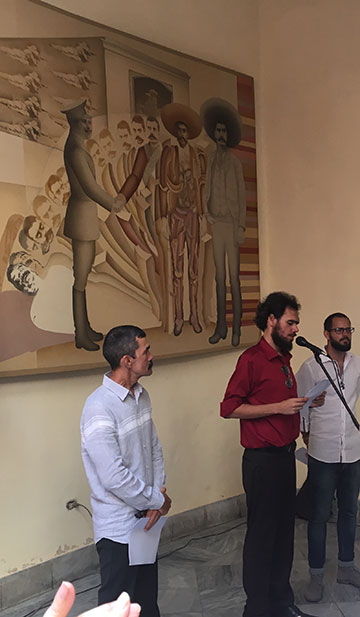 Conference organizer Frank García Hernández,
giving opening remarks to the conference in the Museo Casa
México “Benito Juárez,” Havana. (Internationalist
photo)
Conference organizer Frank García Hernández,
giving opening remarks to the conference in the Museo Casa
México “Benito Juárez,” Havana. (Internationalist
photo)As Trotskyists fighting to bring the program of Bolshevism into the class struggle today, we are often asked to explain: Why are the forces laying claim to the heritage of Bolshevism so fragmented? And why, in the vast majority of cases, are groups which claim to be Leninist and Trotskyist so distant from what Lenin and Trotsky meant by communism? Grasping the devastation wrought by Stalinism is a crucial part of understanding why today it is necessary to restore the very meaning of terms and concepts like socialism, communism, working-class politics and so much more.
The bloody repression of revolutionaries carried out by Stalin was the corollary to his betrayals of revolutionary struggle, such as stabbing the Spanish Revolution in the back in the vain attempt to win favor from Britain, France and the U.S. in 1936-39. Stalinist terror, as well as that unleashed by the fascists before and during WWII, wiped out the majority of experienced Trotskyist cadres. This is one of the crucial reasons for the weakness and disorientation of the Fourth International in the postwar period, paving the way for its destruction under Michel Pablo in 1951-53. The LFI calls to reforge the Fourth International as the world party of socialist revolution on the basis of a program that Trotsky would recognize as his own.6
At the Havana conference, many other aspects of revolutionary history and of Trotsky’s work were addressed, in a broad range of presentations. This included talks by Cuban researchers Yunier Mena of the Universidad Central de Las Villas on “Art and Literature in The Revolution Betrayed” and Caridad Massón of the Marinello Institute on “The Trial of Sandalio Junco,” a trade-unionist considered one of the founders of Cuban Trotskyism. Other talks reflecting Trotskyism’s impact in Latin America included presentations about Julio Antonio Mella, founder of the Cuban Communist Party; about Trotsky’s writings on Latin America, his analysis of the rise of U.S. imperialism, and the period when he directed the Bulletin of the Opposition from Mexico; on some aspects of the Brazilian Trotskyist movement; as well as my presentation on Trotsky in Mexico and Sándor John’s talk on Bolivian Trotskyism, both of which are reproduced at www.internationalist.org.
While it is not possible to go into all the topics and talks at the conference, my interest was also especially drawn by those on the “parallel lives” and aesthetic views of Trotsky and the leftist German philosopher and critic Walter Benjamin; on Sergei Eisenstein’s film Strike and “the roots of permanent revolution” in the period of the 1905 revolution; and on comparisons between Trotsky during the four years (1929-33) he spent in Turkey during his final exile, and the pioneering Turkish communist and poet Nazim Hikmet.7
Another vital aspect of the conference was the opportunity to meet veterans of the Trotskyist movement, who in some cases we have heard about for decades. It was exciting to meet them in person; and the fact that our views have often diverged widely over the years proved no obstacle to debate and a real exchange of ideas. To choose one example, when I was first learning about the history of the Trotskyist movement, the importance of workers democracy was illustrated to me by the notorious violations of this principle by the British pseudo-Trotskyist leader Gerry Healy. A key case was the 1966 gangster attack on a supporter of Mandel’s United Secretariat named Ernest Tate, whose “crime” was to sell a pamphlet critical of Healy in front of a meeting in London.
It was moving to meet Ernie Tate over a half century later, together with his comrade Jess MacKenzie, who worked closely with the legendary African American revolutionary Robert F. Williams in the early 1960s.8 And also to meet other veterans, such as the Austrian scholar Helmut Dahmer, who gave the talk on Trotsky and Walter Benjamin. Dahmer related how he first met Trotskyists as a young teenager in 1956, at a march in solidarity with the Hungarian Revolution. It was remarkable to be meeting and talking together at a conference on Trotsky, in Havana!
“The Most Dangerous Man in the World”
On the second day of the conference, Frank García invited us to visit the Cuban Cinematography Institute for the world premiere of sections of The Most Dangerous Man in the World, a documentary-in-progress on Leon Trotsky. (The title is based on Winston Churchill’s description of the exiled Bolshevik.) Film maker David Weiss (1912-2005) started the project in 1972. It is now being produced by Lindy Laub, with historical assistance from Suzy Weissman. Both were present and introduced the film in person.
Watching long portions of the film in the crowded Havana theater was an extraordinary experience. As Laub explains, Weiss, “a lifelong Trotskyist of Communist parents ... looked around and realized that the people who had known and worked with Trotsky were dying.” He traveled to Mexico, Turkey, France and other countries to interview them on film. Combined with extremely rare footage of Trotsky himself, the film includes interviews with more than 40 people, including French militants who knew Lenin and Trotsky in 1917, Nadezhda Yoffe, daughter of his close comrade and friend Adolph Yoffe; Black Jacobins author and one-time Trotskyist C.L.R. James; founding U.S. Communist and Trotskyist Arne Swabeck, and many others. (See “How It Began,” on trotskyproject.com.) We see Trotsky’s grandson Esteban Volkov in Coyoacán, speaking in the same voice I have come to know well over the years.
Among the most moving scenes are the interviews with Trotsky’s secretaries Fanny Yanovich and Jean van Heijenoort – who gives a kind of guided tour of the houses in Prinkipo and France where Trotsky lived – and James Cannon. Shortly before traveling to Havana, I was studying Cannon’s Struggle for a Proletarian Party (1943). To see and hear Cannon in full color, speaking in his calm yet powerful voice, telling anecdotes about Lenin and Trotsky at congresses of the Communist International – it is hard to describe the impact of these scenes. Like many others, we eagerly await the completion of this crucial film.
On the last night of the conference, a group led by a friend of the conference organizer gave a concert, featuring the debut of a special piece written for the occasion, at a neighborhood café that offered a glimpse of Havana’s vibrant cultural life. As Bryan Palmer humorously commented to me, it was a mixture of Trotsky and Allen Ginsberg. The occasion was poignant as we said goodbye, for now.
Today, 79 years after Trotsky’s murder by a Stalinist assassin, the Trotskyist program of world socialist revolution is more crucial than ever. Sixty years after the Cuban Revolution of 1959, the revolutionary and internationalist defense of its conquests is a vital part of that program. For us as revolutionary Marxists, the Havana conference helped show concretely – in many different ways – what this means.■
- 1. Editor’s note: Idalberto Ferrera died in 2013 at the age of 95. Despite his long record of upholding defense of the Cuban deformed workers state against imperialism and counterrevolution, comrade Idalberto together with his son León and other Cuban Trotskyists were imprisoned for a number of years, first in the 1960s and again in the late ’70s.
- 2. In one exchange during floor discussion, Dan La Botz (formerly of the International Socialists, then Solidarity and now the Democratic Socialists of America) gave a particularly full-throated brief for Shachtman, crying out, “Shachtman was right!”
- 3. He subsequently joined the International Socialist Organization, which dissolved earlier this year. This past summer, following the trajectory of many in both the former ISO and Mandelite milieu, he came out for supporting the presidential campaign of Bernie Sanders, who is seeking the Democratic nomination. Of course, supporting a capitalist candidate is contrary to the ABC of Marxist politics, which is based on the political independence of the working class (as Cannon underlined in his speeches against support for bourgeois “third parties” in the late ’40s).
- 4. See Shipwreck of a Generation: The Memoirs of Joseph Berger (Harvill Press, 1971).
- 5. Serge broke with Trotsky in the mid-1930s, among other things, over the Bolshevik leader’s sharp opposition to any capitulation to the “popular front” of class collaboration promoted by Stalin and his followers that produced such disastrous results in Spain (as well as France and elsewhere).
- 6. See “Declaration of the League for the Fourth International” (April 1998, on line at http://www.internationalist.org/lfideclaration.html ) and “The Struggle to Reforge a Genuinely Trotskyist Fourth International (November 2017, on line at http://www.internationalist.org/lficonferencedocument1712.html ).
- 7.
This made me recall a poem by Hikmet that I first heard on
Radio Universidad in Mexico two decades ago:
“We go to the moon
and further still,
where even telescopes reach.
But when will the people of our Earth
no longer go hungry
and no one be afraid of anyone,
or rule over anyone,
or curse anyone,
or steal another’s hope?
This is why I am a communist:
to answer that question.” - 8. This is described in Tate’s memoir Revolutionary Activism in the 1950s & 60s (Resistance Books, 2014).
